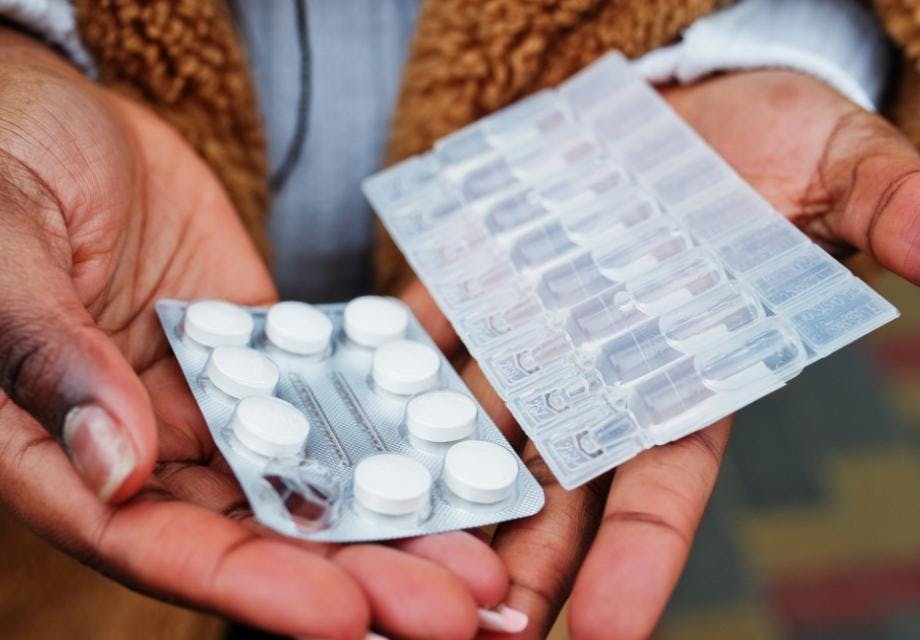“Watershed moment” as HIV Prevention Choice Manifesto unveiled
Hester Phillips
21 September 2023
Manifesto calls for women and girls in East and Southern Africa to have access to all HIV prevention options – and the freedom to choose which method is right for them
Women-led groups in East and Southern Africa have released a manifesto aimed at securing political and financial support to ensure genuine choice when it comes to HIV prevention.
What is the manifesto about?
The HIV Prevention Choice Manifesto For Women and Girls in Africa is calling on donors and governments to commit to expanding women and girls’ access to the full range of HIV prevention methods now available.
The manifesto is led by the African Women Prevention Community Accountability Board, in partnership with the International Community of Women Living with HIV East Africa and Advocacy for Prevention of HIV and AIDS.
Why is it important?
Women and girls continue to be disproportionately affected by HIV, accounting for 63% of all new infections in East and Southern Africa in 2022. In the past, condoms were the only HIV prevention option available. But this has changed in recent years with the development of oral PrEP, injectable PrEP and the PrEP vaginal ring.
Having more options means more women and girls may be able to find an HIV prevention method that works for them. But only if they know about, and have access to, the full range of options available.
What does the manifesto say?
The manifesto calls for a new approach to HIV prevention that “centres girls, women and communities and enshrines the right to choose what works for her and them”.
The manifesto’s main section is a Call to Action, which is based on five key areas.
Area 1: Choice
This calls for the massive scale-up of all safe and effective HIV prevention options. All HIV and sexual and reproductive health and rights programmes should offer all three PrEP methods, as well as external (male) and internal (female condoms) and voluntary medical male circumcision.
Women must be given the freedom to choose which method they use. This should be based on what they think will work best for them at that time in their life, rather than individuals being directed to a “preferred or better” method by health providers or policymakers.
Area 2: Communities
Key and marginalised women must be prioritised for choice-based HIV prevention. These communities are defined as adolescents, girls, young women and pregnant and breastfeeding women. Stigma, discrimination and criminalization of these communities must also be addressed. These communities must also be supported to lead on the research, development and delivery of new and existing HIV prevention methods.
Area 3: Financing
There is a need to finance HIV prevention research to develop additional HIV prevention options and programmes that deliver choice. Community engagement initiatives should be financed to drive choice-based programming.
Area 4: Programmes
To ensure easy access and availability, choice-based HIV prevention should be integrated into services for contraceptives, cervical cancer, sexually transmitted infections, antenatal and postnatal care and mental health. There is a particular need to address the barriers that stop adolescent girls and young women from accessing HIV prevention services.
Area 5: The future
Research and development for multipurpose prevention options, which protect against unintended pregnancy, STIs and HIV, should be a key focus.
What does this mean for HIV services?
Ensuring that all HIV prevention methods are available, accessible and affordable to all women and girls will take a huge advocacy effort. This manifesto can be used to mobilise such efforts to drive this agenda forward.
But for women and girls to truly have choice, they need to fully understand each option. And that means knowing what each option is, how it works and what its risks and benefits are. Without this knowledge, women and girls will not be able to make an informed choice about what would be best for them.
Websites like Be in the KNOW are essential sources of such information. As is the role of community health workers and peer educators in ensuring this knowledge is widely shared and understood. There is also a need for HIV prevention services to provide non-judgemental, non-biased counselling to support individuals with their decision-making.
Later in 2023, the manifesto authors will release a roadmap and accountability framework. This will provide more detail on how choice-based HIV prevention for women and girls can become a reality and should be watched closely.
Get our news and blogs by email
Keep up-to-date with all our latest news stories and blogs by signing up to the Be in the KNOW news digest.
